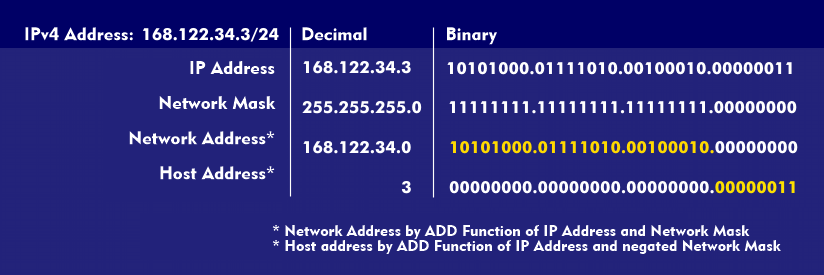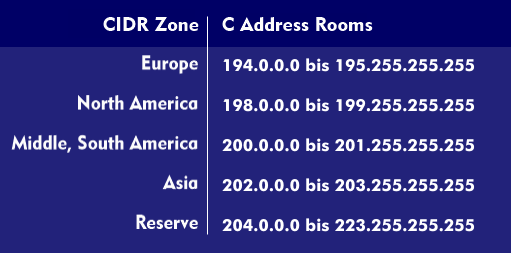classless interdomain routing (CIDR)
The class division of the 32-bitIP addresses is not very efficient. The rigid address scheme of the classic IP address in network and host part prevents flexible adaptation and significantly restricts the entire address space. Since the number of IP addresses is limited, the Classless Interdomain Routing (CIDR) procedure has been introduced for the IPv4 address, which makes more efficient use of the available 32-bit address space. This CIDR procedure is also used in the IPv6 address.
CIDR breaks up the rigid IP address structures
The CIDR method is based on subnet masks and resolves the rigid IP address structures for the network address and the host address. The subnet mask splits the IP address into the network part and the host part. There is a direct mathematical relationship between it and the IPv4 address from which the address range can be determined.
In thenotation, these subnet masks are specified by a suffix, which is appended to the IP address with a slash. The suffix determines the number of 1-bit values in the IP address, starting with the first bit in the first byte. If the suffix is /1, the first byte of the subnet mask starts with a 1. In binary notation, the subnet mask would look like this: 10000000 00000000 00000000. In dotted decimal notation, the subnet mask looks like this: 128.0.0.0. Class A addresses have the suffix /8 and correspond to decimal 255.0.0.0. Class B addresses have /16 and correspond to 255.255.0.0. etc. The suffix can take values between /0 and /32. The CIDR scheme can cover a total of 4,294,967,296 (32-bit) addresses. A CIDR notation can look like this: 168.122.12.3/24, where the IP address is 168.122.12.3 and the subnet mask is 255.255.255.0.
If a domain needs a certain number of addresses, then CIDR allocates the appropriate number of blocks to it. If 1000 addresses are needed, that would be four blocks. To ensure worldwide use of the C address spaces, the worldwide address ranges have been divided into four zones, giving each region 32 million addresses and allowing another 320 million to be held in reserve.
The CIDR process reduces the routing tables stored in routers. This suffix can be used to identify a large Internet Service Provider( ISP) or an operator of a large part of the Internet. In this way, underlying networks can also be grouped together; so-called supernetting. The method is used in the Border Gateway Protocol( BGP), among others, and is described in RFC 1518.


